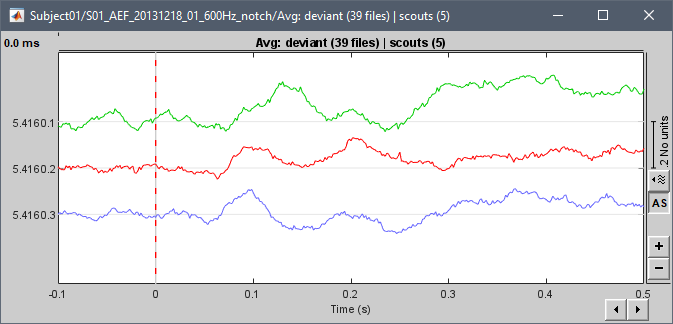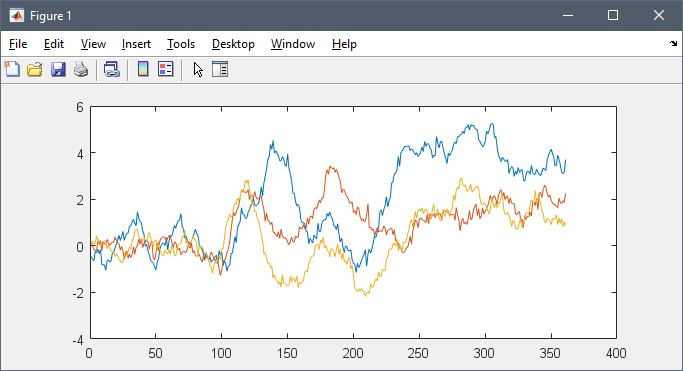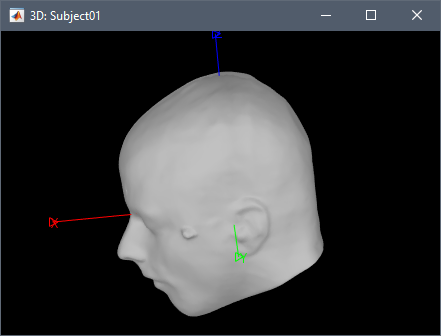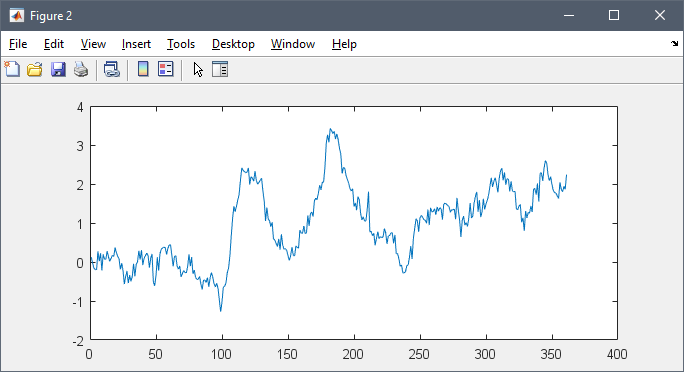If I separately focus on the auditory, visual, and sensory-motor areas on the source, are there any suitable templates I can use?
Are you referring to anatomical templates, e.g. the ICBM152 brain?
For individual source estimation, or for group analysis?
Is there any reason for which you would not be satisfied with this default template available in Brainstorm?
https://neuroimage.usc.edu/brainstorm/Tutorials/DefaultAnatomy
For source estimation, your main concern should be to use a template head that has a similar shape/size as the subject's head, and in a similar age range in the case of pediatric studies.
If you have access to a digitized head shape of the subject, this could help:
https://neuroimage.usc.edu/brainstorm/Tutorials/TutWarping
Thank you, Francois.
When I foucs on attention task, I can use a model from BESA software (i.e., Ventral Attention with Noise Sources) that encompassed the visual sensory areas, parietal, frontal, and cingulate cortex (such as, LIFG, RIFG, LMFG, RMFG, LTPJ, RTPJ, LSTG, RSTG, LOcc, ROcc, MidF, MidC). Is there any models in brainstorm can be used in studying auditory, visual or sensory motor area?
You can estimate the sources for the whole brain (https://neuroimage.usc.edu/brainstorm/Tutorials/SourceEstimation) and then perform a ROI analysis (https://neuroimage.usc.edu/brainstorm/Tutorials/Scouts) using any of the surface or volume parcellations available on your subject:
- Tutorials/SegCAT12 - Brainstorm
- https://neuroimage.usc.edu/brainstorm/Tutorials/SegCAT12#Volume_parcellations
- https://neuroimage.usc.edu/brainstorm/Tutorials/LabelFreeSurfer#Cortical_parcellations
- https://neuroimage.usc.edu/brainstorm/Tutorials/LabelFreeSurfer#Volume_parcellations
- https://neuroimage.usc.edu/brainstorm/Tutorials/SegBrainSuite#Cortical_Parcellations
- https://neuroimage.usc.edu/brainstorm/Tutorials/SegBrainVisa#Cortical_parcellations
Hi, Francois, when I estimate the sources for the whole brain, I can select "Constrained: Normal to cortex", to make current dipoles are oriented normally to the cortical surface. What should I do if I want to estimate the sources by the dipole in the tangential direction?
What should I do if I want to estimate the sources by the dipole in the tangential direction?
Use an unconstrained source model (surface or volume):
Using unconstrained model makes source orientations consists of triplets of dipoles. I want to use one of the dipoles alone. What should I do?
This is not a standard option offered by Brainstorm.
You could try computing a mixed model (Tutorials/DeepAtlas - Brainstorm) and hack then results to keep only the dipoles you are interested in. But I really don't recommend you try doing something like this.
Note that there is an infinity of "tangential directions" at a given location (while the normal is unique).
Thank you, Francois. Can I use this method in source spaces: surface or volume (e.g., Method: Minimum norm imaging; Measure: sLORETA; Source model: Unconstrained)?
If it's possible, which variable in the structure of the source files should I change?
If it's possible, which variable in the structure of the source files should I change?
From what you explained, it looks like you want to estimate the minimum norm solution using different dipoles orientations than what Brainstorm offers. Therefore, it is not the source file that you need to modify, but the forward model, and then compute the sources from the hacked head model file.
I don't recommend you try working on this: the chances of errors are very high, and I don't understand what outcomes you can expect from it.
If you are interested in studying the tangential components at each location of the cortex, you could compute a surface source model with unconstrained orientations, and then project at each location the estimated dipoles (X,Y,Z) on a different base of tangential vectors (U, V, estimated differently at each location). You need significant experience with geometrical computations in Matlab in order to script this.
Can you explain what your objectives are?
It would help us propose solutions that are better adapted.
Apologies for the confusion caused by the presentation. When studying auditory problems, it may be more helpful to estimate the sources by the dipole in the tangential direction (from front to back) compared with using the dipoles oriented normally to the cortical surface.
If you have good reasons not to use the constrained orientations option (because you know the sources you want to study are not oriented normally to the cortex surface, or because it gives poor results), then use the unconstrained orientations option (3 orthogonal dipoles per vertex). Do not try to use random arbitrary orientations.
Thank you, Francois. So, I can estimate the sources using the unconstrained orientations option (e.g., Method: Minimum norm imaging; Measure: sLORETA; Source model: Unconstrained), then modify the ImagingKernel in the Structure of the source files. If I want to use the dipole in the tangential direction (from front to back), what changes do I need to make to the ImagingKernel to ensure that I am using the dipole in the tangential direction?
I'm still not sure I understand what kind of results you are expecting to obtain.
If your goal is to constrain the source estimation only into the direction in which you want to observe something: don't do it. The minimum norm estimates would explain the variance of the signal with all the dipoles available. If you select only the dipoles you want to see active, all the activity would be projected to these dipoles, but it would not mean the sources are actually there. To expect something meaningful from the minimum norm solutions, you need to use a source model that includes all the possible sources of activity.
This is somewhat illustrated in this tutorial (see the one-to-last screen capture with the full head source model): https://neuroimage.usc.edu/brainstorm/Tutorials/RestingOmega#Power_maps
If your goal is for one given brain location and one unconstrained min norm map, to know how much of the activity is possibly oriented along a specific direction, then you can maybe:
- Create a scout with one single vertex
- Extract the scout time series (with the process), with the option Scout function = ALL, and without selecting the option "Norm of the three orientations"
- You'll get three signals (one per orientation):

- Export this file to Matlab (e.g. variable "s")
figure; plot(a.Value')

- Define a row unit vector with the orientation you are interested in, in SCS coordinates. How do you define this, I'm not sure... For simplicity, here I'll use the vector
v=[0,1,0], corresponding to the red Y axis in the 3D figures:

v * s.Valuewould give you the projection of the brain activity at this given 3D point on thevvector. In this simple case, it would simply return the second signal (the orange one).figure; plot(v*s.Value)

Again, I'm not sure for what this would be of any use to you.
When I estimate the sources using the unconstrained orientations option, the ImagingKernel of the source file is triple that using the constrained orientation option. Does the ImagingKernel matrix represent the value along the xyz direction? For example, the first three values are the values along the xyz direction of the first location , and the 4th to 6th values are the values along the xyz direction of the second location?
The order of the dipoles in ImageGridAmp are the same as the ones in the forward model:
Hi, Francois. Another question, how to input Talairach coordinates when creating a new scout? Is there any tool in brainstorm that can convert Talairach coordinates to MNI coordinates?
The Talairach coordinate system is not supported by Brainstorm.
But you can use cs_convert to convert between MNI and ACPC coordinates:
CoordinateSystems - Brainstorm